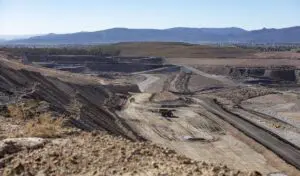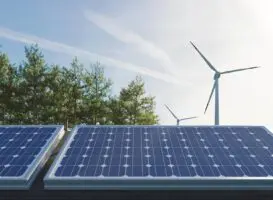International Power, the owner of the Hazelwood brown coal generator in Victoria, has joined the owners of the Yallourn brown coal facility in calling for an effective halt to the deployment of wind and solar energy to protect their profits.
IPR, now a subsidiary of French energy giant GDF Suez, says in its submission to the Climate Change Authority’s review of the Renewable Energy Target that the trajectory for large- and small-scale generation in Australia should be “leveled off.”
It also said it wants to prevent organisations such as the Clean Energy Finance Corporation and the Australian Renewable Energy Agency “from being able to finance renewable projects.”
That may seem like an extraordinary position to take, but it seems to be the default one for most of the large brown coal generators in Victoria’s Latrobe Valley, with the exception of the AGL-owned Loy Yang A. IPR’s position echoes that of TRUenergy, a subsidiary of Hong Kong-based China Light & Power, which owns the Yallourn power station.
Both generators are making far too much money from the carbon compensation package offered by the federal government’s proposed buyout, but the proliferation of wind and solar energy represents a material threat to their revenues and profits because of the downward impact on wholesale energy prices. This situation is worsened by the largely unexpected fall in electricity demand over the last three years, in turn driven by the explosion in rooftop solar.
Both IPR and TRUenergy say the RET should not be ceased immediately, because it would endanger projects already built, and those financed and contracted. But they want the RET adjusted to avoid any of what they see as unnecessary additional capacity in the network.
IPR says it is “not opposed to renewables per se” – and points to the 48MW Canunda wind farm in South Australia that it commissioned in 2005. But it describes the RET as a “high cost and unnecessary” policy given the carbon price (echoes of IPART), which “threatens long term reliability” of electricity supply in the country. TRUenergy took a similar line.
It appears to favour a series of “gateway” targets like that proposed by TRUenergy, and endorsed by the likes of paper manufacturers Visy and Amcor, who also want waste-to-heat technologies included, as well as Origin Energy.
Meanwhile, Ergon Energy, the state-owned regional retailer and network operator in Queensland, said the RET should be scrapped, because it was not needed with the carbon price. Failing that, it should be adjusted to ensure it did not deliver any more than 20 per cent of demand. It said “over-achieving the (20 per cent) policy objective seems an unnecessary luxury.”
Origin Energy, which kicked off the public campaign to replace the fixed 41,000GWh target with a floating “real” 20 per cent target – in its case presumably to protect its gas interests – has also released its submission to the CCA.
It said the RET, as it now stood, would likely result in about 9000MW of wind generation by 2020 – and “very little in the way of learning from this investment”. It said this would be challenging in a market with flattened demand, which it says could fall even further from current predictions.
Like the ACIL Tasman study commissioned by TRUenergy, and quoted by many, Origin Energy says adjusting the RET to a “real” target would save $25 billion in nominal dollars out to 2030. It said this comprised $20 billion based on volume and price differential and an additional $5 billion to firm up the intermittent wind generation output.
Origin said it favoured renewable technologies that could provide “baseload” power – which explains its interest in geothermal and hydro schemes such as that in PNG (and also fits in with its portfolio of flexible gas generators).
It says that the RET would likely require more than double the wind capacity originally envisaged – as other technologies expected to contribute, such as geothermal, will fail to do so. This would require more than 2000MW a year to be built over the last four years of the scheme. Under its modified scenario, it suggests a rollout of just 1000MW a year over that period.








